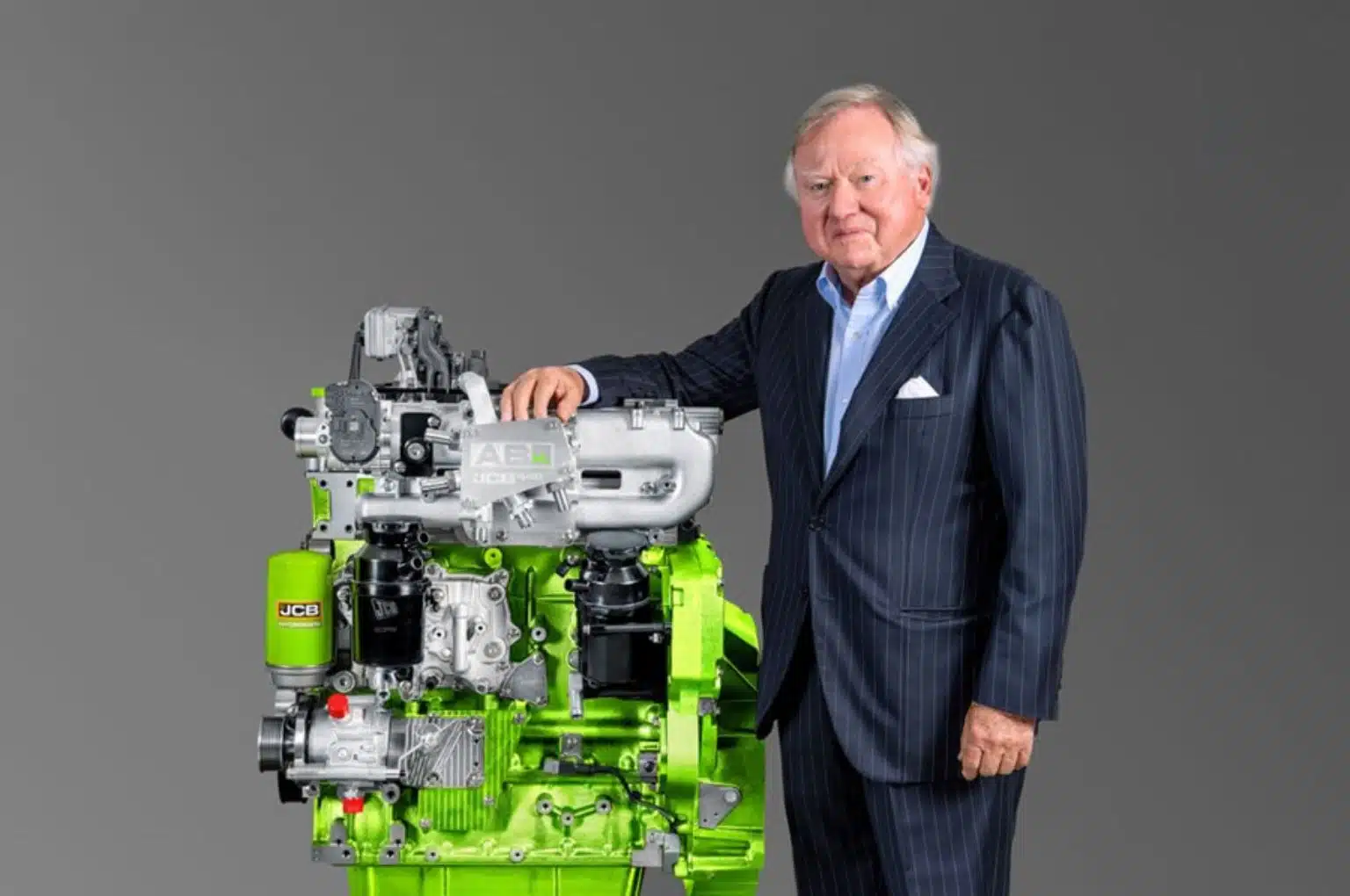JCB debuts hydrogen combustion engine
JCB is planning to unveil their brand new hydrogen combustion engine in March at the Conexpo 2023 show in Las Vegas as part of the International Fluid Power Exposition (IFPE).
“The JCB engineering team has made enormous strides in a short space of time to develop a hydrogen internal combustion engine and it already powers a JCB prototype backhoe loader and a Loadall telescopic handler. As the first construction equipment company to develop a fully working combustion engine fuelled by hydrogen, I am delighted we are now able to present this technology on the international stage,” says JCB Chairman, Lord Bamford.
JCB has been responsible for a series of industry innovations on its ‘Road to Zero’. The company developed the world’s first battery-electric mini excavator and has been at the forefront of electric technology development to meet customers’ demands for zerocarbon products with its E-TECH range. JCB’s commitment to reducing emissions goes back almost 25 years, and its latest diesel engines have already delivered a 97% reduction in NOx emissions and a 98% reduction in particulates since 1999. Today JCB’s diesel-powered machines also emit 50% less CO2 compared to those manufactured in 2010.
JCB’s clean diesel engine technology will also be showcased on the stand in Las Vegas. A team of 100 engineers has been working on the development for more than a year and the 50th JCB hydrogen combustion engine has now come off the production line as part of the development process. JCB invested £100 million to produce these efficient hydrogen engines, and this investment is going full-steam ahead.
(Source: JCB)
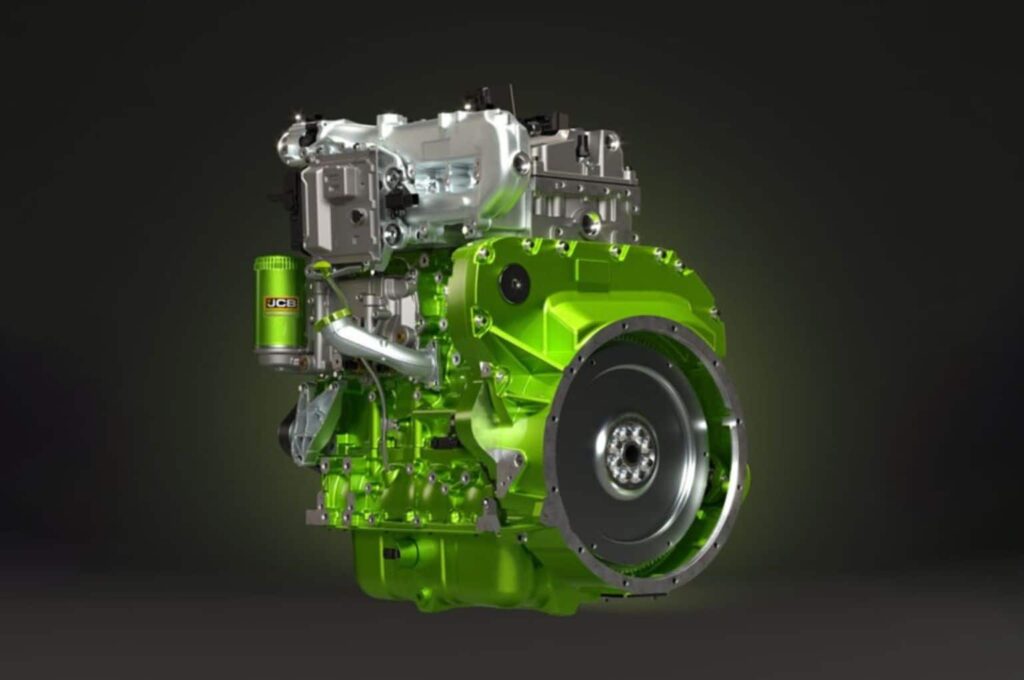
SentiV watches your crops
Drones have their place in watching crops, but what about an autonomous rolling watchdog also peeping under the leaves for problems? The SentiV scouting robot from the France-based company, Meropy, caught the eye at CES 2023 (Consumer Electronic Show) in Las Vegas. SentiV is a scouting robot with sensors that highlights the variability within field crop plots and detects potential threats to crops. Its route can be plotted through any shape field, and it will go about its business quietly until the field is completely surveyed. The information gathered is highlighted within variability maps, allowing farmers to plot any inputs daily, with precision.
Meropy says: “We develop SentiV for the people of the agricultural sector. Our goals are for a better farming profitability (input savings, improved yields and crop quality), a good quality of life for farmers (time saving and better working comfort), and environmental preservation (input reduction and less soil compaction).”
(Source: Meropy)
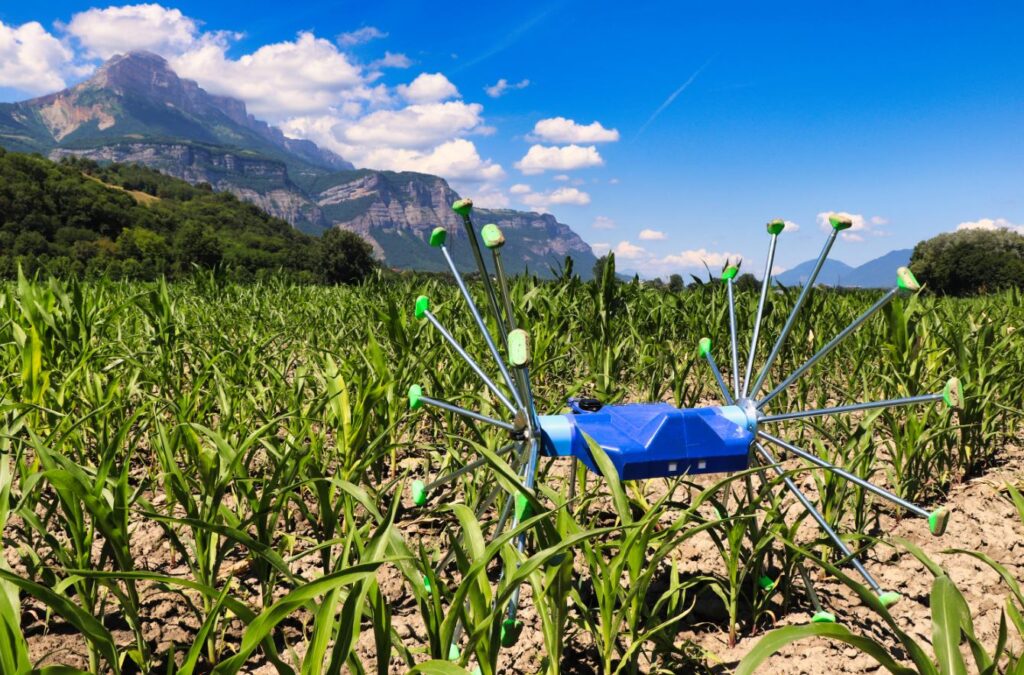
Machine picks lettuce – slowly
A vegetable-picking robot that uses machine learning to identify and harvest a commonplace, but challenging, agricultural crop has been developed by engineers. For a human, the entire process takes a couple of seconds, but it is not so easy for a robot. The ‘Vegebot’, developed by a team from the University of Cambridge, was initially trained to recognise and harvest iceberg lettuce in a lab setting.
It has now been successfully tested in a variety of field conditions in cooperation with G’s Growers, a local fruit and vegetable co-operative. Although the prototype is nowhere near as fast or efficient as a human worker, it demonstrates how the use of robotics in agriculture might be expanded, even for crops like iceberg lettuce which are particularly challenging to harvest mechanically.
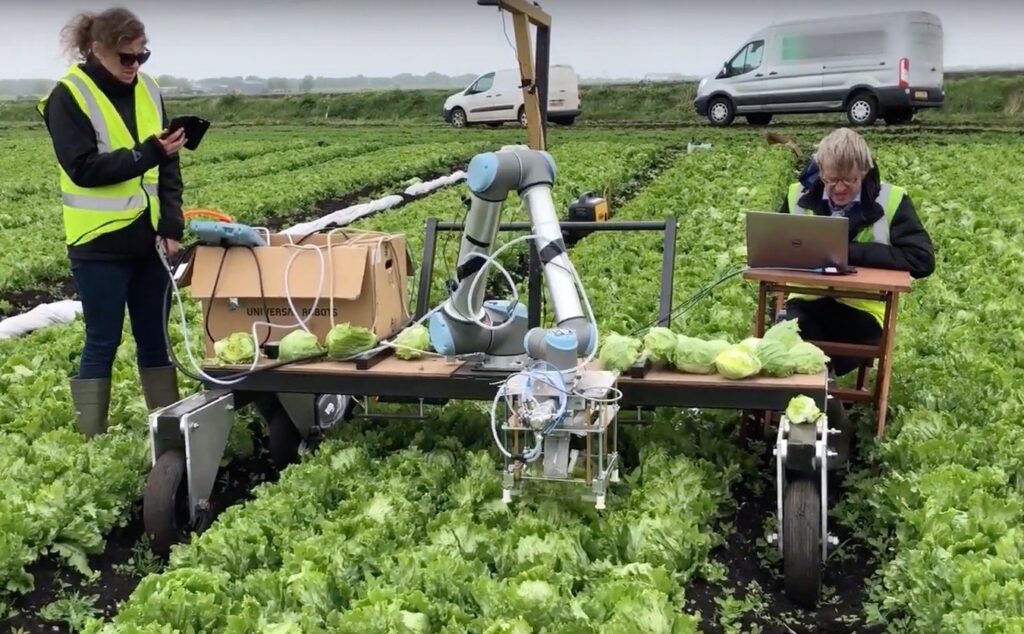
“Every field is different, every head of lettuce is different,” said co-author Simon Birrell from Cambridge’s Department of Engineering. “But if we can make a robotic harvester work with iceberg lettuce, we could also make it work with many other crops.” The Vegebot first identifies the ‘target’ crop within its field of vision, then determines whether a particular lettuce is healthy and ready to be harvested, and finally cuts the lettuce from the rest of the plant without crushing it so that it is ‘supermarket ready’.
The researchers developed and trained a machine learning algorithm on example images of lettuces. Once the Vegebot could recognise healthy lettuces in the lab, it was then trained in the field, in a variety of weather conditions, on thousands of real lettuces. “We wanted to develop approaches that weren’t necessarily specific to iceberg lettuce so that they can be used for other types of above-ground crops,” said Iida, who leads the research team. A robotic harvester could be trained to pick only ripe vegetables, and since it could harvest around the clock, it could perform multiple passes on the same field, returning at a later date to harvest the vegetables that were unripe during previous passes.
Reference: Simon Birrell et al. ‘A Field Tested Robotic Harvesting System for Iceberg Lettuce.’ Journal of Field Robotics (2019). DOI: 10.1002/ rob.21888
Meet Smartcore, an autonomous soil sample collector
Collecting precise soil samples is essential for farmers because it determines the quantity and balance of nutrients available for crops, and can determine crop yields. “Smartcore,” an autonomous robot developed by a pair of Purdue University College of Engineering graduates, is designed to collect accurate, repeatable soil samples in fields and bring them to the edge of the field for shipment to the lab. Troy Fiechter and Drew Schumacher founded Rogo, officially Rogo Ag LLC, a startup to advance the technology and move it to the public. A video about the company and technology is available at https://youtu.be/RgigU1ckNtk .
“Smartcore helps farmers make better strategic decisions,” said Schumacher, Rogo’s president.
SmartCore uses a Bobcat skid steer chassis and navigates fields using boundary algorithms and a variety of obstacle detection sensors. It also is equipped with RTK GPS to ensure that soil samples are taken from the correct spot and can return every season within inches. The largest and most common source of error in the soil testing process is with collecting the soil sample. Smartcore is unique in using a highspeed, self-cleaning hydraulic auger that collects soil to a precise depth. “People often think that because you stick a probe 6 inches into the soil that means 6 inches of soil are extracted,” Schumacher said.
“But a probe might plug up and you collect less than six inches. Or it might plug up and send a wad of dirt down into the rest of the soil. A lot of things can go wrong if you do not use the right equipment. Our depth is accurate within an eighth of an inch 100% of the time, and it is fully extracted every time.” 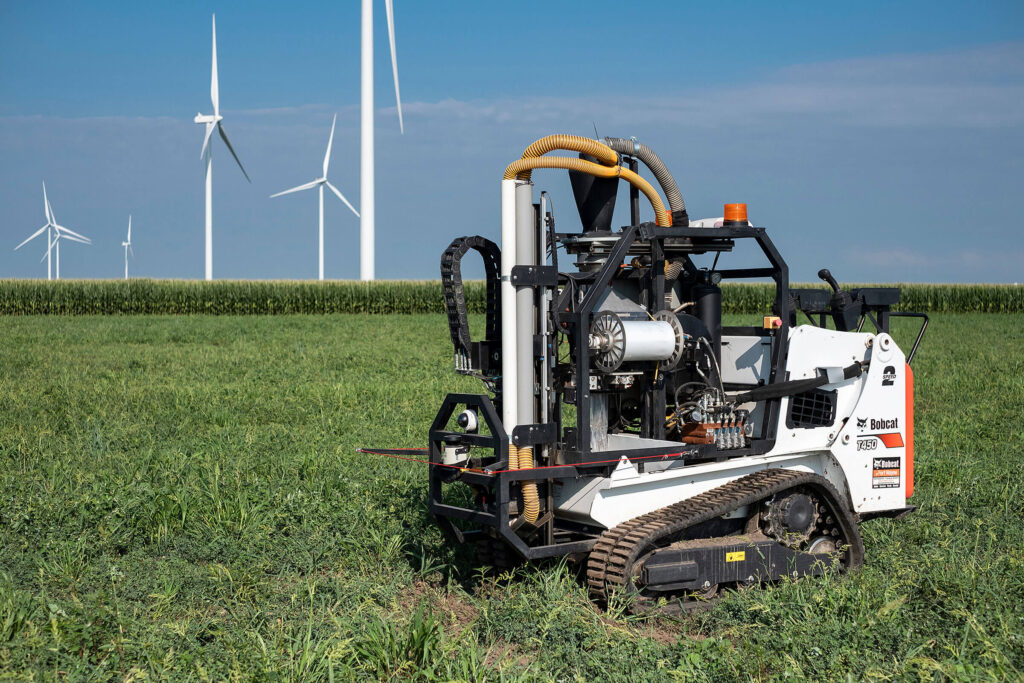
In traditional sampling practices, the variance in depth and location can lead to a sampling error as high as 20%. Errors can cause farmers to spend more than necessary on fertiliser, or under apply in certain areas. “Farmers want to sample from the same location so they can understand how their soil is evolving,” Schumacher said. “If you don’t compare the same soil site season to season, you are going to have a field that varies a lot. If you want to know what you added to the field and how it is changing the field, you have to compare apples to apples as much as possible.”
“We have seen more interest in what we are doing. It has started some good conversations that have been valuable,” he said. “We are always looking to serve more farmers and more retailers so we can continue to make a difference.”

